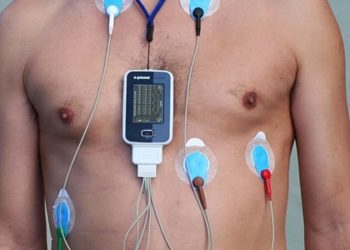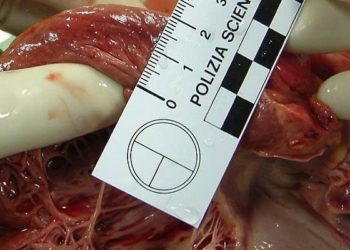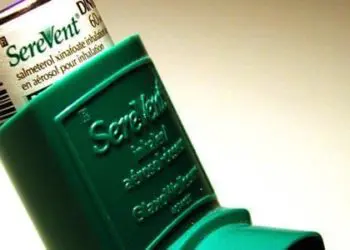Cases of neurodevelopmental disorders caused by mutated lncRNA CHASERR
1. Three unrelated children were found to have a de novo deletion in the long non-coding RNA (lncRNA) CHASERR, which is adjacent to the chromodomain helicase DNA-binding protein 2 (CHD2), resulting in a syndromic, early-onset neurodevelopmental disorder (NDD).
2. The disease phenotype was distinct from that of patients affected by CHD2 loss-of-function mutations and patient-derived cell lines were found to have increased CHD2 protein levels.
Evidence Rating Level: 4 (Below Average)
Study Rundown: Developmental and epileptic encephalopathies are heterogeneous disorders leading to neurodevelopmental delay. CHD2 is a protein that plays key roles in the neurogenesis of cortical neurons and interneurons, de novo haploinsufficient loss-of-function mutations which lead to phenotypical disorders encompassing seizures, developmental delay, and intellectual disability with normal brain imaging. However, increased CHD2 dosage has not been demonstrated in human disease. CHASERR is a highly conserved lncRNA upstream from CHD2 that represses CHD2 expression, which is essential to postnatal survival in mice, yet its role in human disease remains unclear. This study reported on three unrelated children with a syndromic, early-onset NDD who had a heterozygous de novo deletion within the CHASERR locus. These children shared a phenotype of severe encephalopathy, facial dysmorphisms, cortical atrophy, and cerebral hypomyelination, distinct from that of CHD2 haploinsufficiency. In two of these children, their derived cell lines were found to have increased CHD2 mRNA and CHD2 protein expression, correlated with the loss of CHASERR-mediated repression. These results suggest that CHD2 has a bidirectional dosage sensitivity in human disease and prompt further investigations into other lncRNA-encoding genes.
Click here to read the study in NEJM
In-Depth [case series]: Patient 1 was enrolled in the Undiagnosed Diseases Network and the Rare Genomes Project in the United States. Patients 2 and 3 were enrolled as part of the Génétique Médicale research project in France. The MatchMaker Exchange network connected Patients 1 and 2. Genome sequencing was performed on DNA from peripheral blood samples of the patients and their biological parents. RNA sequencing was performed on blood samples and cultured fibroblasts from Patients 1 and 2. Subsequently, RNA sequencing and quantification of CHD2 protein were conducted on induced pluripotent stem cells from Patients 1 and 2. These children were born after uncomplicated pregnancies and normal growth parameters at birth. Their head circumference percentile decreased at 2 years of age. They shared facial dysmorphic features including widely spaced eyes, anteverted nares, low-set ears, and long philtrum. Developmental delay was noted by two months of age and all three had global delay, and could not verbally communicate, ambulate independently, or perform fine-motor tasks. Encephalopathy was also noted early and by 4 years of age, electroencephalography demonstrated generalized background slowing, with no epileptiform activities noted. Magnetic resonance imaging found cortical atrophy, optic nerve atrophy, cerebral hypomyelination, and thin corpus callosum in all three patients by four years of age. Heterozygous de novo deletions of 22-kb, 8.4-kb, and 25-kb were identified in Patients 1, 2, and 3, encompassing the promoter and exons of CHASERR but not CHD2 or its promoter. In Patients 1 and 2, the de novo deletion occurred on the paternally inherited chromosome, whereas the parental origin of the deletion in Patient 3 could not be determined. Patient 1 demonstrated haploinsufficiency of CHASERR when compared to an unaffected sibling. CHD2 protein level was increased in induced pluripotent stem cells from Patients 1 and 2 by a factor of 1.8 and 1.7. The results suggested that CHD2 has a bidirectional dosage sensitivity in human disease and highlighted the potential role of other lncRNAs in human diseases.
Image: PD
©2024 2 Minute Medicine, Inc. All rights reserved. No works may be reproduced without expressed written consent from 2 Minute Medicine, Inc. Inquire about licensing here. No article should be construed as medical advice and is not intended as such by the authors or by 2 Minute Medicine, Inc.







